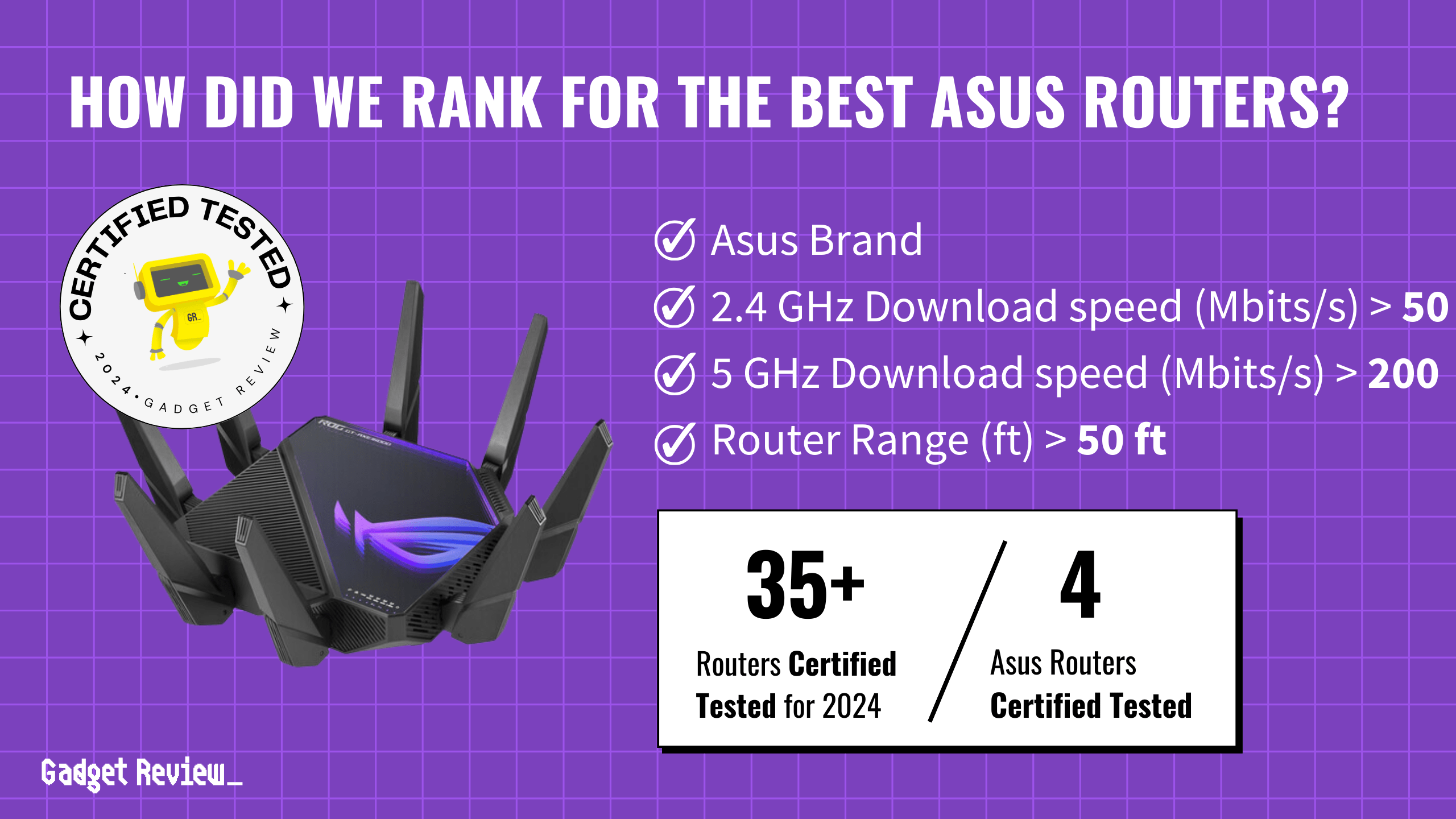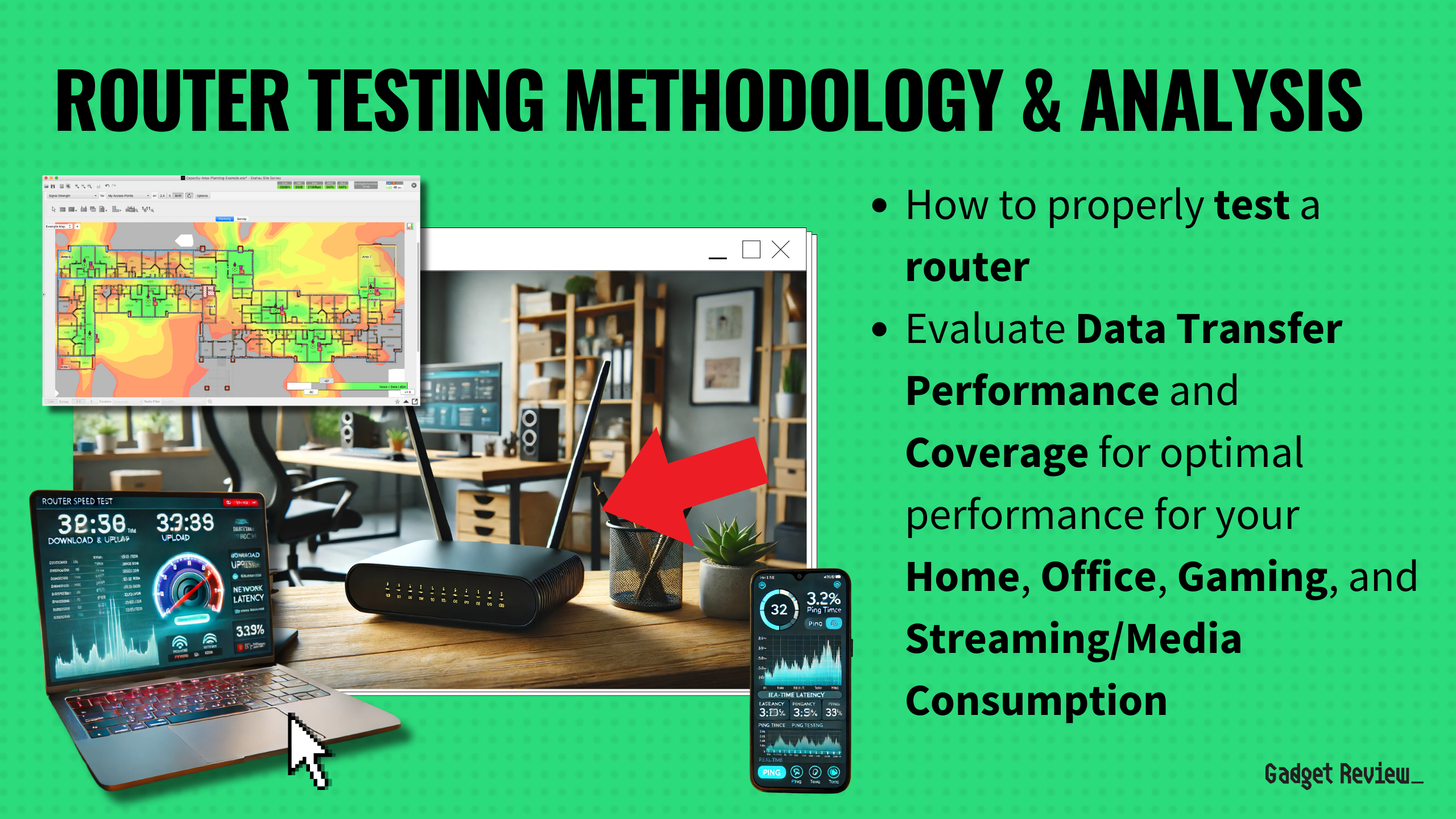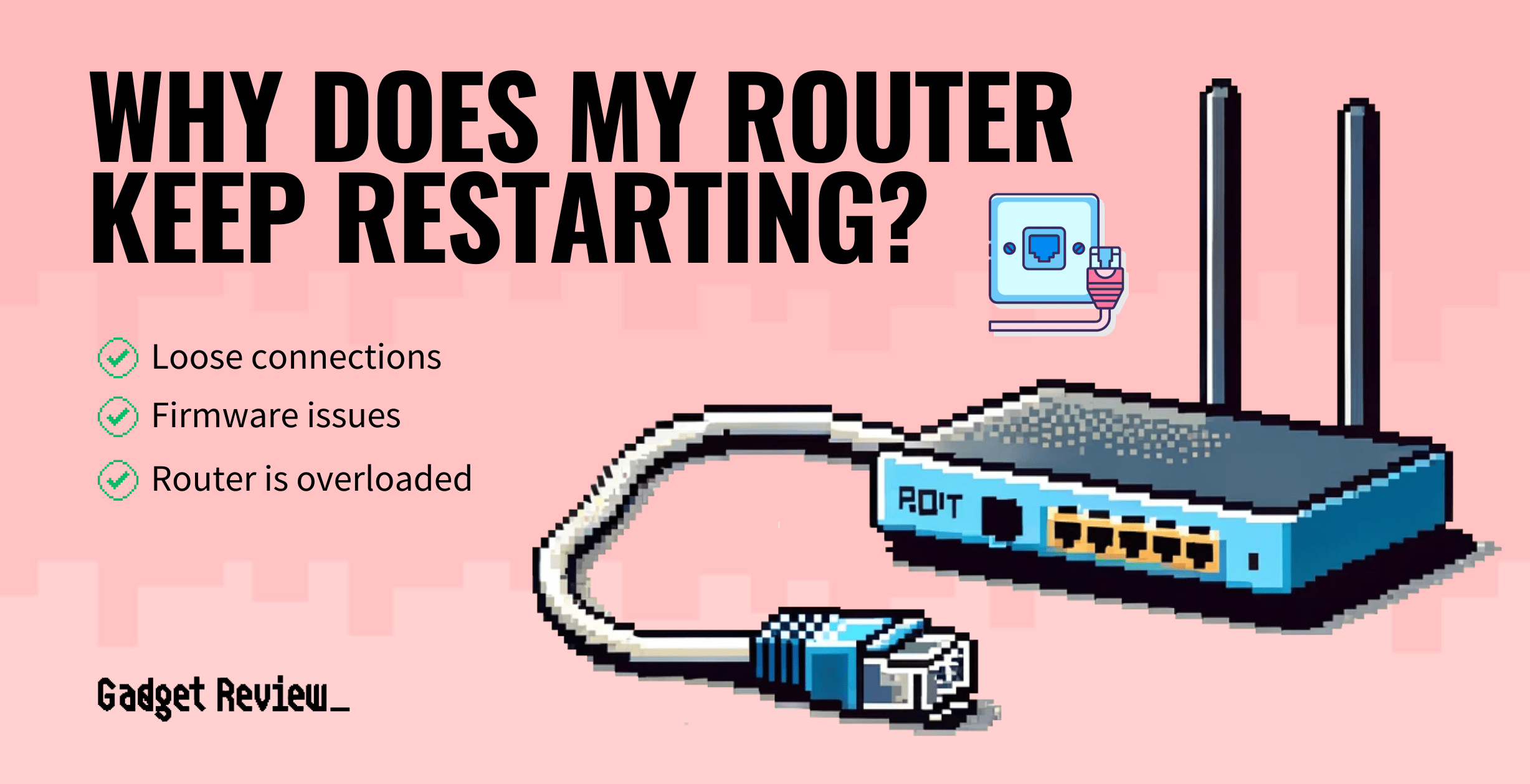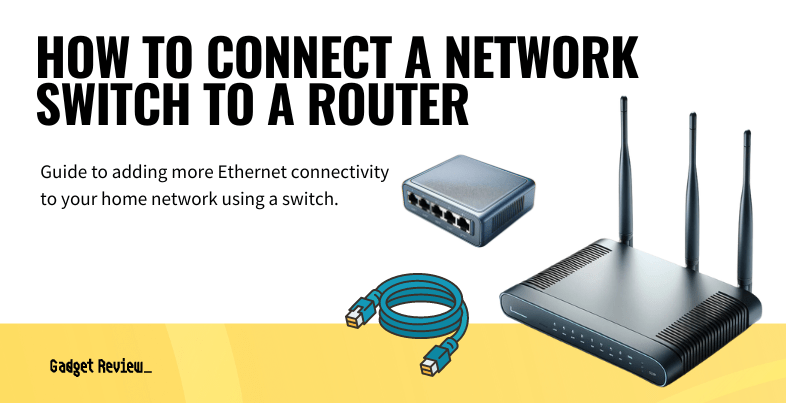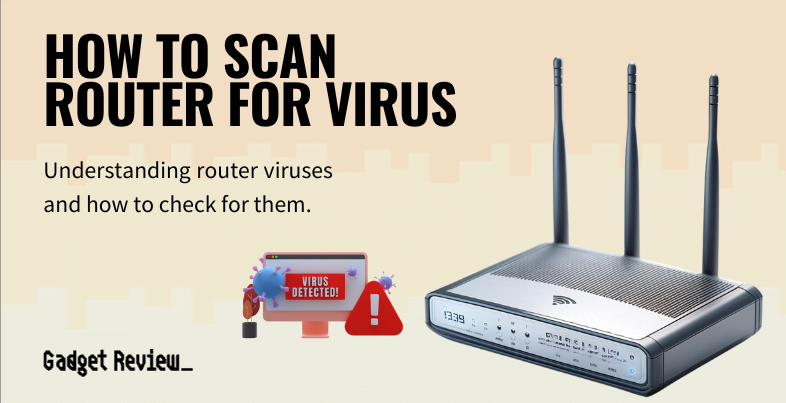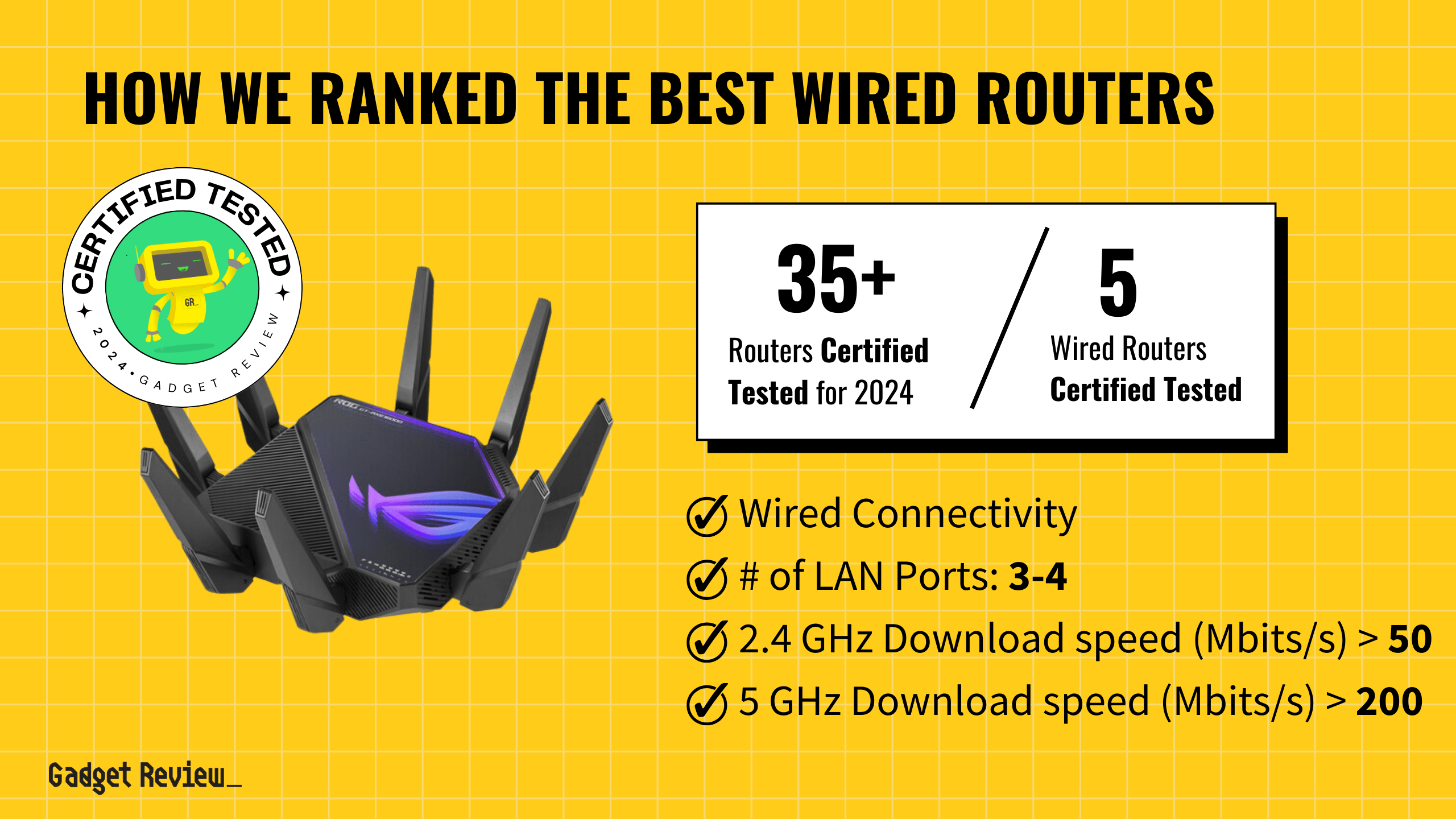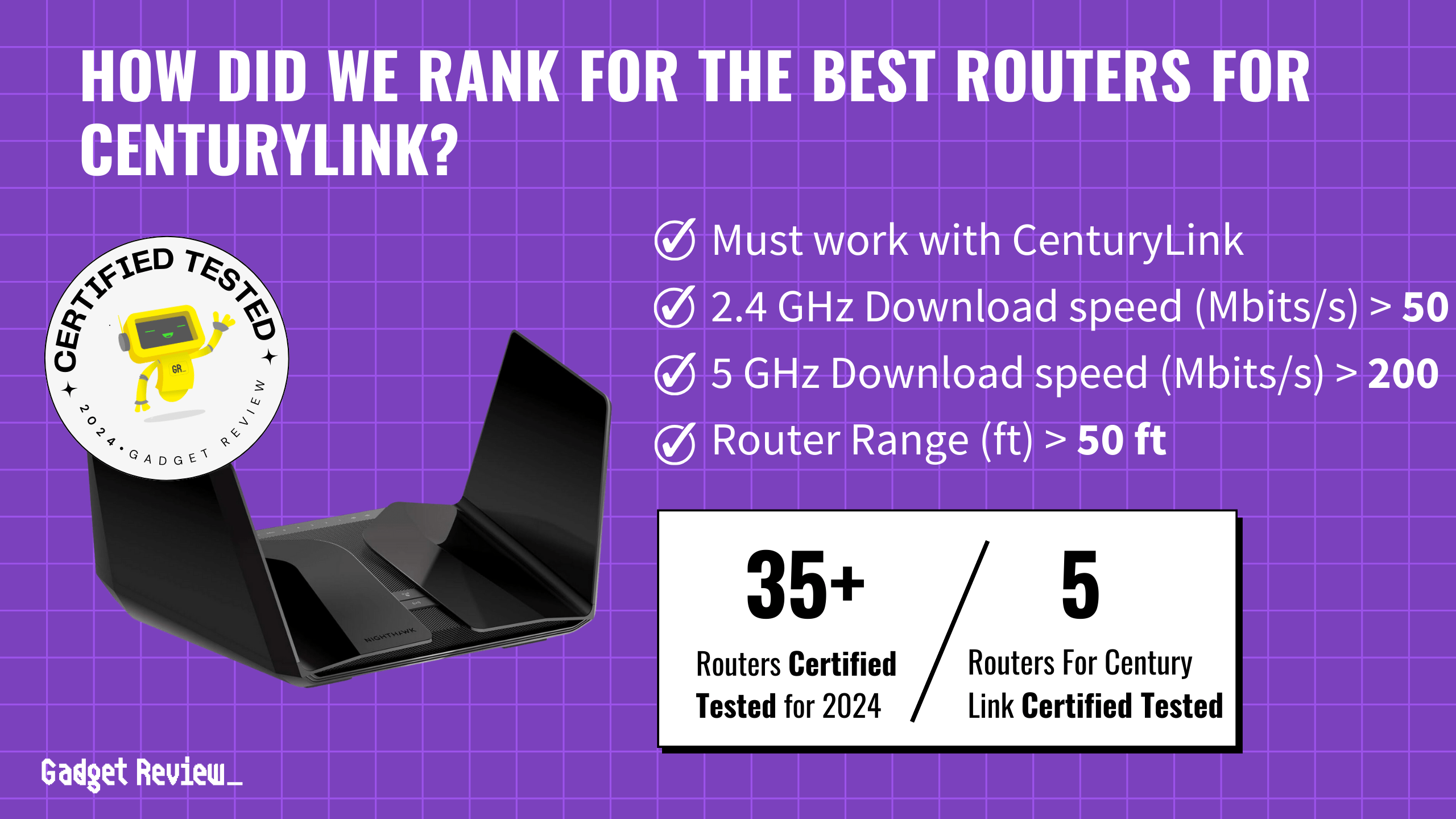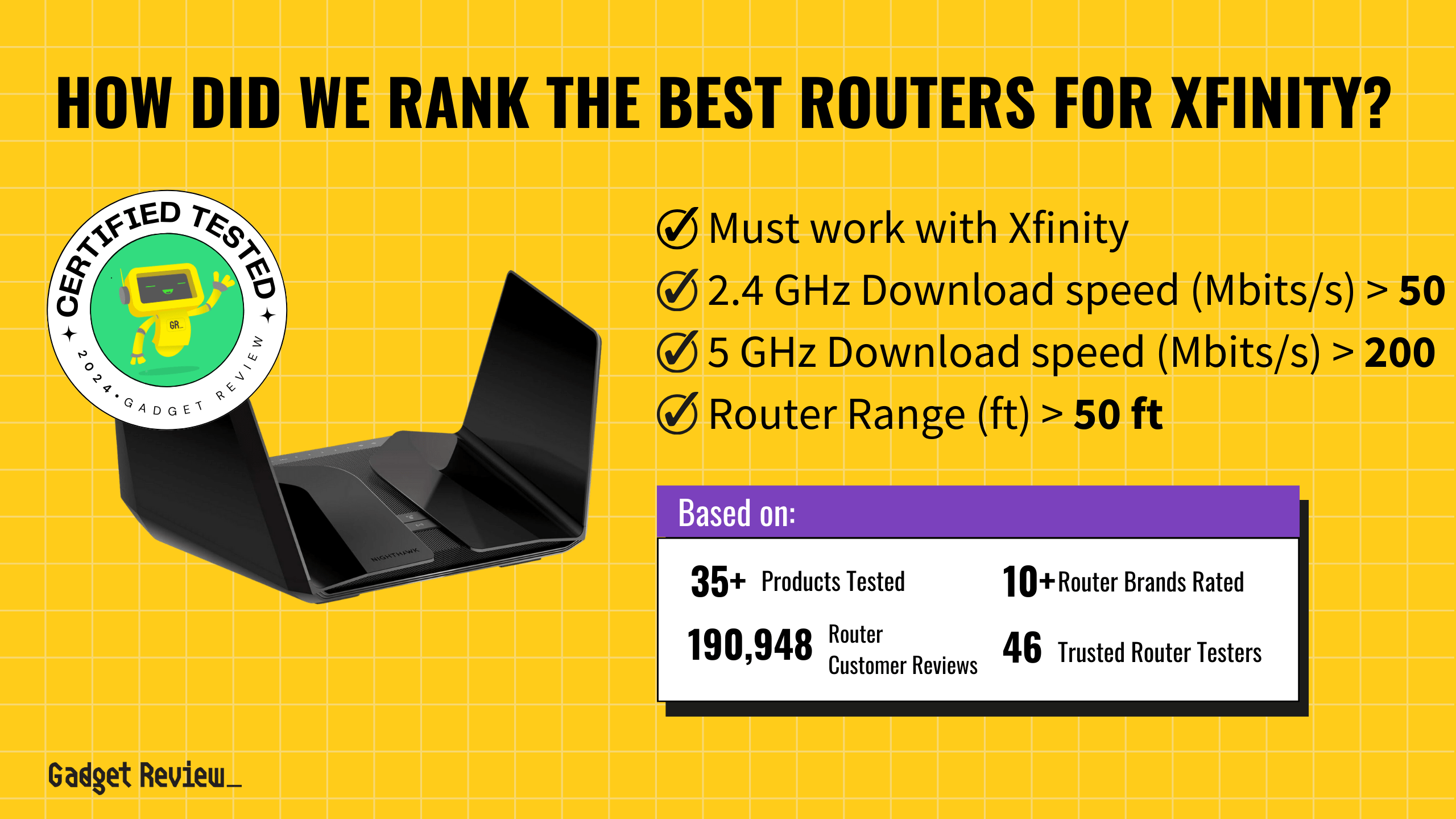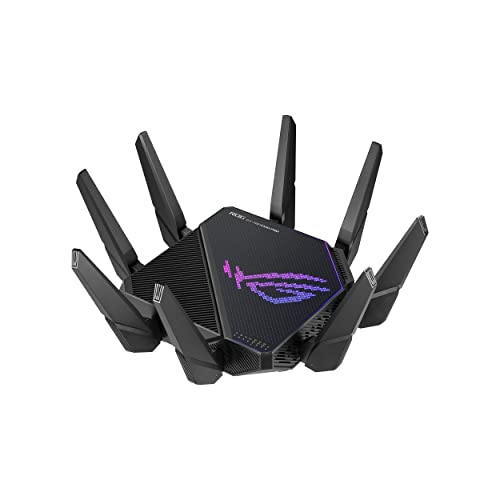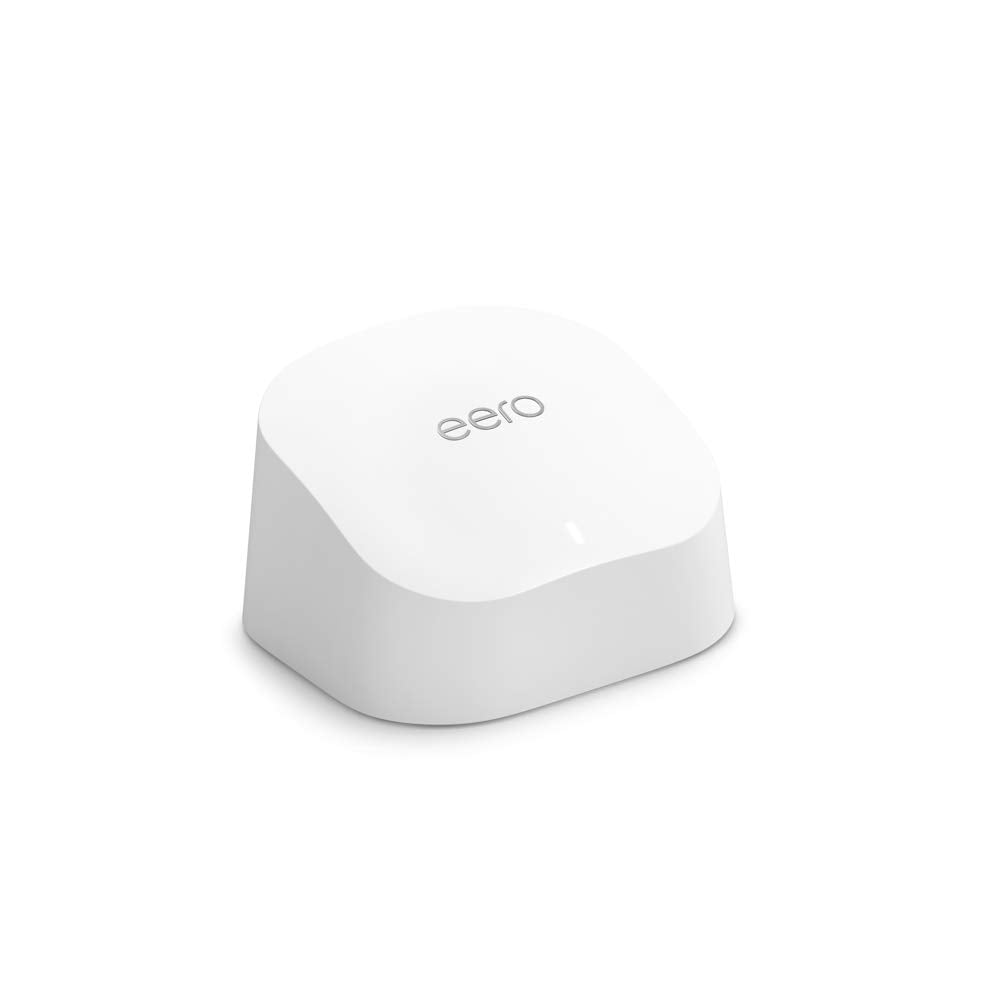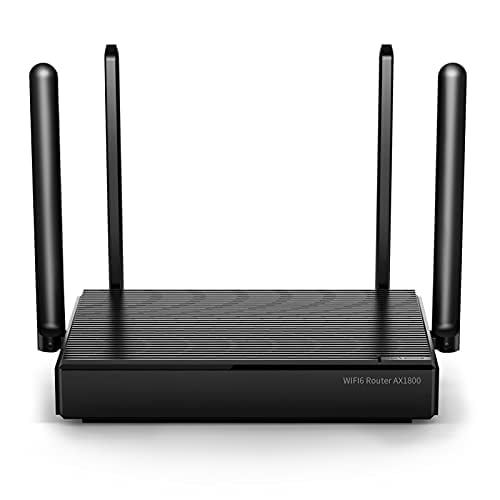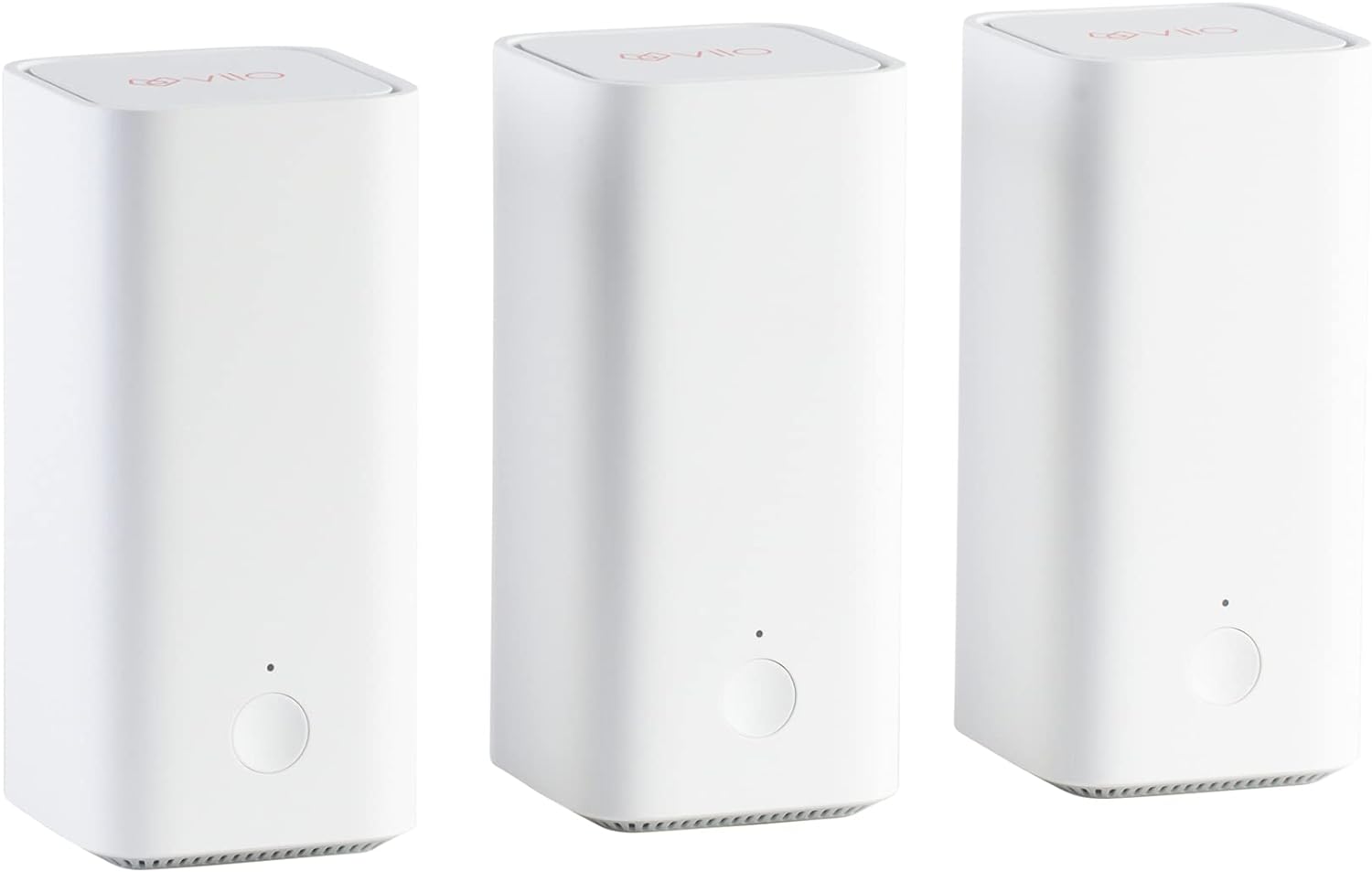When you’re choosing the best Asus router, focus on exceptional performance on the 5 GHz band, essential for streaming and gaming. Asus routers stand out with high throughput speeds, user-friendly interfaces, and robust security features. They support Wi-Fi 6 and AiMesh technology for whole-home coverage, though their 2.4 GHz performance can be average.
Out of 37 routers evaluated, 4 Asus models earned top spots in our buying guide. Our analysis covered 194,354 reviews, filtering out unreliable and fake reviews and ensuring only the best information informs our choices. These top-rated routers have impressive reliability and performance across various use cases, based on our thorough analysis.
How Did We Rank the Best Asus Routers?
Our buying guide for the best Asus routers is grounded in an extensive analysis of over 200 sites, blending expert reviews, testing methodologies, and customer feedback. By pinpointing 2 required test results, 2 advantageous test results, and 1 indispensable specification, we’ve distilled the criteria that truly matter. Our precise evaluation process guarantees that you get reliable recommendations based on the most thorough research available.
Our commitment to unbiased reviews is powered by our ‘True Score’ system, targeting low quality and fake reviews. When you shop through our links, you’re backing our mission. Dive deeper to see how.
?️ Minimum Specifications
- Must be Asus.
? Test Criteria
- 2.4 GHz Download Speed: A download speed on the 2.4 GHz band of at least 50 Mbits.
- 5 GHz Download Speed: A download speed on the 5 GHz band of at least 200 Mbits.
? “Nice To Haves”
- Router Range: A range of at least 50 feet before the signal from the router begins to become noticeably weaker.
- Latency: A latency of 30 ms or less.
Latest Updates
- 06/18/2024: Republished the list to include the best Asus routers based on our True Score system.
Top Asus Routers For 2025
Prices accurate at the time of publishing

Best Overall

Runner Up

Best Value

Best Budget

Best Mid-Range

Premium Pick
Asus ROG GT-AXE16000
Best For Vpn
The Asus ROG GT-AXE16000 delivers unparalleled speeds and advanced features like MU-MIMO and mesh system support, ideal for high-demand gaming and 4K streaming across many devices.
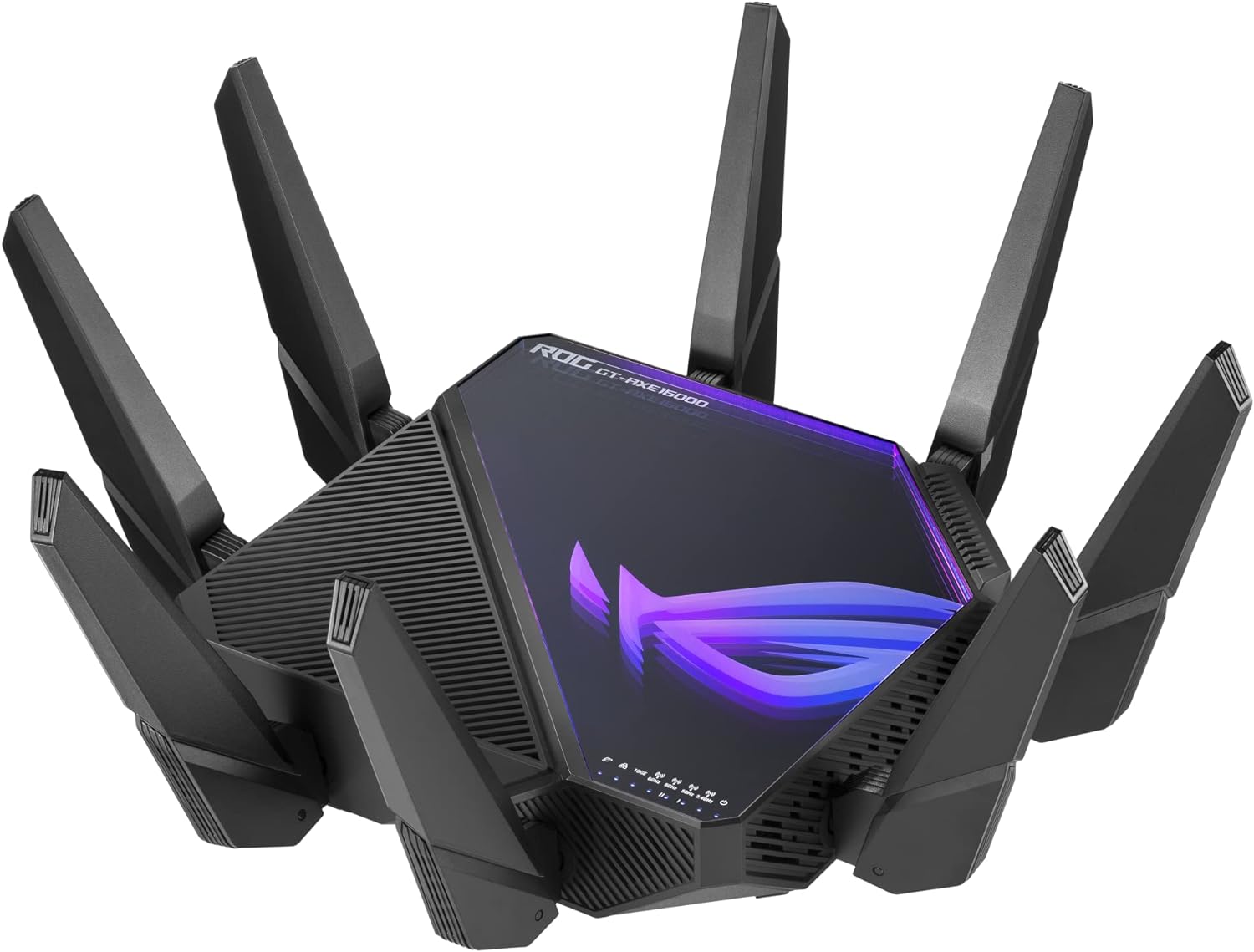
True Score
85865Experts
891kCustomers
Absolutely Fresh
 SAVE $251$699.99$449.00
SAVE $251$699.99$449.00Read More
Snapshot
Reasons to Buy
- Good WiFi Upload/Download Speed
- Easy to Setup and Configure
- Impressive Range of Coverage
Reasons to Avoid
- Poor Latency
Specifications

# of LAN Ports 4 
Frequency Bands 2.4 GHz, 5 GHz-1, 5 GHz-2, 6.0 GHz 
MU-MIMO Support Yes 
Wireless Standard AX 
Mesh System Yes 
Quality of Service Prioritization Yes 
# of Phone Ports n/a 
# of WAN Ports 3 
App Compatible Yes 
Available Storage 256MB 
Band Technology Quad 
Data Encryption Type WPA3 
Energy Star Certified n/a 
Integrated Modem No 
LAN Ports – 
Number of Antennas 8 
Parental Controls Yes 
Processor Cores Quad 
Processor Speed 2 Ghz 
WiFi Range 8000 sq.ft 
WiFi Speed 16Gb 
Wired Speed 1000 Mb All Specs
Test Results
2.4 GHz Download speed (Mbits/s) 113 5 GHz Download speed (Mbits/s) 639 6 Ghz Download speed (Mbits/s) 615 Latency (ms) 69 Router Range (ft) 0 2.4 GHz Upload speed (Mbits/s) 154 5 GHz Upload speed (Mbits/s) 790 6 Ghz Upload speed (Mbits/s) 790 All Tests
All Retailers
- $449.00$700Save $251
- $449.99$600Save $150
Our Verdict
The Asus ROG GT-AXE16000 offers exceptional tri-band speeds, so you can browse, download, and stream on multiple devices simultaneously. With a 6 GHz download speed of 615.2 Mbits/s and an upload of 790.1 Mbits/s, it’s perfect for streaming 4K video or streaming in high quality on platforms like Twitch or Floatplane.
With the 2.4 GHz and 5 GHz bands, the AXE16000 achieves download speeds of 112.88 Mbits/s and 639.1 Mbits/s, respectively. These speeds enable high-definition streaming, competitive online gaming, basic web browsing, and simple video watching on sites like YouTube.
Featuring support for the latest WiFi technology, including mesh system capabilities and MU-MIMO, the Asus ROG GT-AXE16000 is built to efficiently manage many devices. Quality of Service (QoS) prioritization further enhances its ability to allocate bandwidth effectively, ensuring smooth operation for gaming and streaming. With a latency of 69 ms, it also provides a responsive internet experience across various applications, including gaming and video conferencing.
Thanks to its exceptional speeds and high adaptability, the AXE16000 can handle everything from intensive gaming sessions to the connectivity needs of small businesses, offering a dependable, high-performance internet solution. Like most premium products, however, it also comes with a premium price tag.
Read Less
Category Snapshot
Routers
- Total Brands/Products Tested
12 Brands, 37 Products
- Top 2 Brands
Netgear, Asus
- Price Range (Budget-Premium)
$45-$600
- Average True Score
79.42
- Important Test Criteria
Download & Upload Speed (bits/second)
Range (feet/meters)
- Most Trusted Testers

- Top Router Experts
- Typical Warranty
1 year
- Covered by Insurance
Yes – AKKO

Best Overall

Runner Up

Best Value

Best Budget

Best Mid-Range

Premium Pick
Asus ROG GT-AX6000
Offering robust 5 GHz performance and essential features like MU-MIMO, the Asus ROG GT-AX6000 is a cost-effective choice for gamers who do not need 6 GHz band support.
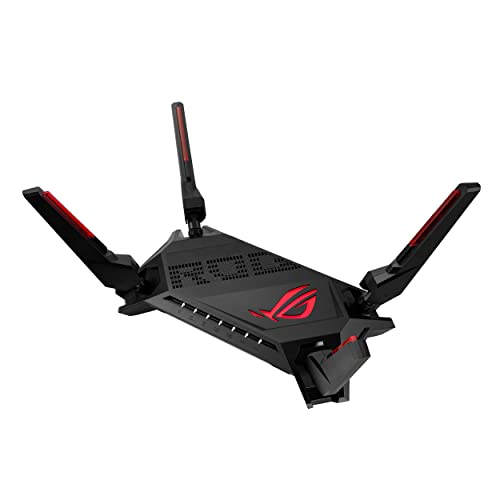
True Score
85857Experts
903kCustomers
Absolutely Fresh
 SAVE $42$259.99$218.34
SAVE $42$259.99$218.34Read More
Snapshot
Reasons to Buy
- Great Wi-Fi speed
- Ease of use
Reasons to Avoid
- Limited to dual-band
- Poor range
Specifications

# of LAN Ports 6 
Frequency Bands 2.4 GHz, 5.0 GHz 
MU-MIMO Support Yes 
Wireless Standard AC, AX, N 
Mesh System Yes 
Quality of Service Prioritization n/a 
# of Phone Ports n/a 
# of WAN Ports 1 
App Compatible Yes 
Available Storage 256MB 
Band Technology Dual 
Data Encryption Type WPA, WPA-Enterprise, WPA2, WPA2-Enterprise, WPA3-Personal 
Energy Star Certified No 
Integrated Modem No 
LAN Ports 6 Gb Ethernet 
Number of Antennas 4 
Parental Controls Yes 
Processor Cores Quad 
Processor Speed 2 Ghz 
WiFi Range – 
WiFi Speed 6 Gb 
Wired Speed 902.56 Mb All Specs
Test Results
2.4 GHz Download speed (Mbits/s) 64 5 GHz Download speed (Mbits/s) 549 6 Ghz Download speed (Mbits/s) 0 Latency (ms) 0 Router Range (ft) 60 2.4 GHz Upload speed (Mbits/s) 146 5 GHz Upload speed (Mbits/s) 432 6 Ghz Upload speed (Mbits/s) 0 All Tests
All Retailers
- $218.34$260Save $42
- $219.99$260Save $40
- $219.99$429Save $209
- $219.99$260Save $40
Our Verdict
If you’re looking for a more affordable gaming router, the Asus ROG GT-AX6000 features strong performance in the 5 GHz band, showcasing a download speed of 549.3 Mbits/s. This is perfect for tasks requiring substantial bandwidth, such as 4K video streaming and online gaming. The 432.1 Mbits/s upload speed is also excellent and means you can stream on platforms like Twitch with little issue – and at a respectable quality too. Plus, thanks to its range of 60 feet, the Asus ROG GT-AX6000’s range makes it ideal for small to medium-sized homes.
This router also supports essential technologies for a high-quality networking experience, including MU-MIMO, which ensures efficient data distribution to multiple devices simultaneously, and Quality of Service (QoS) prioritization, which makes it suitable for environments with heavy streaming and gaming activities. However, the absence of a 6 GHz band means this router isn’t quite future-proofed, so if you need 6 GHz for your devices at home, you’d be better served by the GT-AXE16000.
The Asus ROG GT-AX6000 is a great gaming router at a surprising price. It has all the features you need to keep your gaming experience smooth and interruption-free. While it may not support the 6 GHz band, its throughput is strong enough to make it a reliable pick, thanks to high speeds, QoS prioritization, and good range.
Read Less

Best Overall

Runner Up

Best Value

Best Budget

Best Mid-Range

Premium Pick
Asus RT-AX86S
Best For Long Range
The Asus RT-AX86S balances price and performance with strong 5 GHz speed, MU-MIMO, and QoS prioritization, tailored for budget-conscious users seeking quality connectivity.
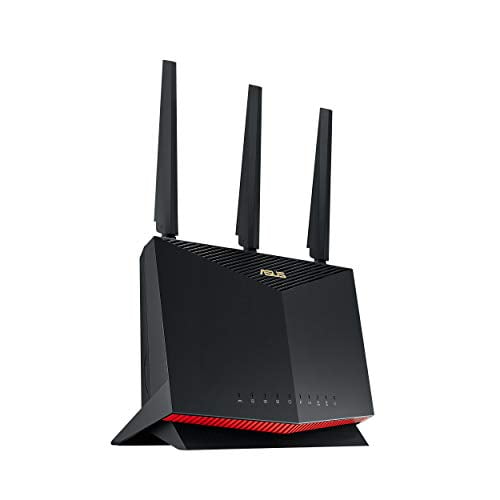
True Score
83833Experts
891kCustomers
Absolutely Fresh
 SAVE $23$225.00$202.24
SAVE $23$225.00$202.24Read More
Snapshot
Reasons to Buy
- Fast WiFi and download speeds
- Incredible range of coverage
- Easy installation and set up
- Low Latency
Reasons to Avoid
- Lacks Backhaul and Mesh Networking
Specifications

# of LAN Ports 4 
Frequency Bands 2.4 GHz, 5.0 GHz 
MU-MIMO Support Yes 
Wireless Standard AC, AX, N 
Mesh System No 
Quality of Service Prioritization Yes 
# of Phone Ports n/a 
# of WAN Ports 1 
App Compatible Yes 
Available Storage 256MB 
Band Technology Dual 
Data Encryption Type WPA, WPA-Enterprise, WPA2, WPA2-Enterprise, WPA3, WPA3-Enterprise, WPS 
Energy Star Certified No 
Integrated Modem No 
LAN Ports 4 Gb Ethernet 
Number of Antennas 4 
Parental Controls Yes 
Processor Cores Dual 
Processor Speed 1.8GHz 
WiFi Range 5400 sq. ft 
WiFi Speed 5.7 Gb 
Wired Speed – All Specs
Test Results
2.4 GHz Download speed (Mbits/s) 89 5 GHz Download speed (Mbits/s) 563 6 Ghz Download speed (Mbits/s) 0 Latency (ms) 15 Router Range (ft) 140 2.4 GHz Upload speed (Mbits/s) 0 5 GHz Upload speed (Mbits/s) 23 6 Ghz Upload speed (Mbits/s) 0 All Tests
All Retailers
- $249.99
- $490.00
Our Verdict
If you’re on a budget for a router that’ll get the job done without sacrificing performance or features, the Asus RT-AX86S delivers both. With a notable download speed of 563.0 Mbits/s on the 5 GHz ba,d it’s fast enough for just about anything you want to do online that needs high-speed internet, from streaming high-definition content or engaging in online gaming.
Upload speed, however, is where it struggles. Hitting just 23 Mbps/s, it’s not a good option if you’re hoping to stream on a platform like Twitch. If you’re hoping to stream your own, you’re better off Asus’ ROG GT-AX6000 – it costs over a hundred dollars, but the upload speed is significantly better.
This router supports key technologies that enhance its overall utility, such as MU-MIMO, which allows for more efficient handling of multiple simultaneous connections. This capability ensures that each connected device receives a stable and robust connection, minimizing potential bottlenecks in data transmission. Plus, the router features quality of service (QoS) prioritization, allowing you to prioritize network traffic for your gaming console or PC.
Despite its low cost, the Asus RT-AX86S is a surprisingly fast router that delivers strong 5 GHz performance, combined with effective MU-MIMO support and QoS prioritization. With its excellent speed, great range of 95 feet—perfect for medium-sized homes—and low 22 ms latency, it’s a fantastic router for watching videos, streaming HD content, and playing video games.
Read Less

Best Overall

Runner Up

Best Value

Best Budget

Best Mid-Range

Premium Pick
Asus ROG GT6 Mesh
Best For Mesh
The Asus ROG GT6 Mesh system provides expansive coverage with exceptional 2.4 GHz and 5 GHz speeds, mesh capabilities, and prioritization features, though it lacks 6 GHz band support.

True Score
82826Experts
864kCustomers
Absolutely Fresh
 SAVE $54$479.99$425.99
SAVE $54$479.99$425.99Read More
Snapshot
Reasons to Buy
- Fast Download/Upload Speed
- Easy to install and operate
Reasons to Avoid
- WiFi speed drops off at long range
- Connection range is limited
- Limited USB Connectivity
- Mediocre Latency
Specifications

# of LAN Ports 3 
Frequency Bands 2.4 GHz, 5.0 GHz 
MU-MIMO Support Yes 
Wireless Standard AC, AX, N 
Mesh System Yes 
Quality of Service Prioritization Yes 
# of Phone Ports n/a 
# of WAN Ports 1 
App Compatible Yes 
Available Storage 256MB 
Band Technology Tri 
Data Encryption Type WEP, WPA-Enterprise, WPA-PSK, WPA2-Enterprise, WPA3-Personal 
Energy Star Certified No 
Integrated Modem No 
LAN Ports 3 Gb Ethernet 
Number of Antennas 9 
Parental Controls Yes 
Processor Cores Triple 
Processor Speed 1.7GHz 
WiFi Range 5800 sq. ft 
WiFi Speed 2.6 Gb 
Wired Speed 2500 Mb All Specs
Test Results
2.4 GHz Download speed (Mbits/s) 139 5 GHz Download speed (Mbits/s) 701 6 Ghz Download speed (Mbits/s) 0 Latency (ms) 22 Router Range (ft) 95 2.4 GHz Upload speed (Mbits/s) 112 5 GHz Upload speed (Mbits/s) 619 6 Ghz Upload speed (Mbits/s) 0 All Tests
All Retailers
- $425.99$480Save $54
- $479.99
Our Verdict
If you’re after a mesh solution that’s also Asus branded, the ROG GT6 Mesh is an instant mesh network right out of the box, no extra purchases necessary. With an impressive 2.4 GHz download speed of 139.35 Mbits/s and an outstanding 5 GHz speed of 701.3 Mbits/s, this mesh system provides excellent speed for anything from playing games to watching videos to simply browsing the web. Since it’s a mesh network, you also get to place where your towers go, helping to reduce dead zones in your home.
Incorporating advanced features like MU-MIMO, the Asus ROG GT6 Mesh simultaneously ensures efficient data handling across multiple devices. And, as the gamer-focused branding might have hinted, the GT6 also features quality of service prioritization, so you can single out the traffic from your PC or console and give it greater priority on the network, helping to reduce lag spikes and throttling. However, it’s worth noting that the GT6 doesn’t feature support for the 6 GHz band, which limits its lifespan as more devices come out and support the greater speeds and overall bandwidth it provides.
If you just need a gaming router and don’t care about having a mesh network out of the box, the ROG GT-AXE16000 offers excellent 6 GHz performance and is a gaming-focused router from Asus as well. However, it’s also noticeably more expensive, and because it’s not a mesh network, it has a more limited range and coverage.
The Asus ROG GT6 Mesh router provides extensive and reliable WiFi coverage alongside exceptional 2.4 GHz and 5 GHz performance. Its advanced features and wide coverage make it perfect for setting up in larger homes or offices, but the lack of 6 GHz support means it’ll be the connection speed bottleneck for newer devices you add to your network in time. However, if all you need is exceptional performance, wide coverage, and gaming-first features, it’s hard to go wrong with the GT6.
Read Less
Which Criteria Matters for Testing Best Asus Routers?
By focusing on these criteria (2 required, 2 nice to have), anyone can quickly and easily compare these routers and how they’ll perform. This helps you make an informed decision and purchase a router that will meet your needs.
| CRITERIA | RANGE | REQUIRED | DEFINITION |
|---|---|---|---|
| 2.4 GHz Download Speed | > 50 Mbits/s | Yes | The maximum speed that the router can reach when downloading on the 2.4 GHz band. |
| 5 GHz Download Speed | > 200 Mbits/s | Yes | The maximum speed that the router can reach when downloading on the 5 GHz band. |
| Router Range | > 50 ft | No (Nice to have) | How far a device can be from a router before the signal starts degrading. It is worth noting that 2.4 GHz reaches further than 5 GHz. |
| Latency | < 30ms | No (Nice to have) | The delay that is created by a signal being sent by the router and then received. |
Our Trusted Data Sources
We looked at 120+ router reviewers and found that 46 are trustworthy (60%+ Trust Rating). The three we have listed below are our most trusted for routers.
- James Morris – Kit Guru, LinkedIn
- Matt Spencer – TechGearLab, LinkedIn
- Brian Nadel – Tom’s Guide, MuckRack
Interested in a comprehensive analysis of our data sources? We’ve got you covered. Below, you’ll find a detailed list of every router review website we’ve identified, organized by their respective Trust Ratings from highest to lowest. But we didn’t stop there. We’ve meticulously reviewed each publication and verified the data by checking whether the authors have bio links to MuckRack or LinkedIn. We’re committed to not only checking the facts but ensuring their veracity.
Router Test Data & Results
Disclaimer:
Evaluating router performance is more than hardware analysis. While hardware tests are straightforward, the challenge lies in contextualizing the results within the limits of real-world usage. Routers operate under conditions that testers cannot fully standardize, including variations in Internet Service Providers (ISPs), network traffic congestion, discrepancies between advertised and actual internet speeds, and the physical layout of homes. These factors introduce a degree of unpredictability, making it hard to draw universal conclusions. As such, our router recommendations aim to provide useful general guidance, accommodating a wide range of home environments and internet setups.
1. 2.4 GHz Download Speed (Mbits/s)
The oldest and slowest of the bands on a router is the 2.4 GHz band, but it sticks around for a reason. Generally speaking, while this band features the slowest available speeds and has the lowest bandwidth, but also reaches out the furthest. It’s not the best band to connect to connect if you need high speeds, but if you just need to be connected for light browsing or anything that’s low bandwidth, it works. Alternatively, if you own a lot of old devices, this band may be the only band they can “see” and therefore, use.
Given the age of the band, top speeds on 2.4 GHz cap out very quickly. We recommend a speed of at least 50 Mbits/s, but if you aren’t really going to be using this band for anything other than checking web pages, you can go lower. It’s worth noting, though, that this might lead to a more frustrating and laggier time on modern sites with lots of scripting and high-quality images.
2.4 GHz Download Speed
> 50 Mbits/s
Acceptable range of performance
Definition: The top speed the router reaches downloading on the 2.4 GHz band.
Units of Measurement: Mbits/s (megabits per second)
Tools to Measure: Speed-checking software
Why It’s Important:
For older devices or for connecting at a longer range, the 2.4 GHz frequency is the only one that you’ll be able to use, so it should have usable speed.
2.4 GHz Download Speed (Mbits/s; higher is better; 0 = No Data)
2. 5 GHz Download Speed (Mbits/s)
5 GHz Download Speed
> 200 Mbits/s
Acceptable range of performance
Definition: The top speed the router reaches downloading on the 5 GHz band.
Units of Measurement: Mbits/s (megabits per second)
Tools to Measure: Speed-checking software
Why It’s Important:
This band is used by most modern devices and offers greater speeds that enable activities like gaming and HD streaming on multiple devices.
The much faster 5 GHz band offers up much greater bandwidth and is much, much better at meeting high-speed demands. Streaming high-quality video, using streaming services, gaming, downloading large files and games – the 5 GHz band is what makes all of these activities quick and bearable. It reaches a lower range than the 2.4 GHz band, but it’s also much faster, so you’ll use it more, especially on newer devices that actually support the band.
Given how much you’ll be using this band, we recommend a speed of at least 200 Mbits/s to ensure you’re able to enjoy streaming and gaming on at least a few devices simultaneously. Any lower and you start to run into real bottleneck concerns, such as endless buffering, lagging, or drops in connection.
5 GHz Download Speed (Mbits/s; higher is better; 0 = No Data)
3. Router Range (ft)
Router range is exactly what the name suggests: how far can you get from the router before you start experiencing issues with your connection? The complicating factor is the simple fact that range depends on the band you’re using. 2.4 GHz is a band that offers greater range, so it gives tests results that show a greater range than tests that use the 5 GHz band. In general, our research found most publications used the 5 GHz band, so our recommendations are based on that.
As such, we recommend your router have a range of at least 50 ft. This gives you a good “bubble” around the router that you can connect to, but it’s important to know that things like the walls in your home can cause issues. Thicker walls block more signal, thinner walls block less. Some materials will also do a better job than others will at stopping signal, so if you see a router with a range of 65 ft, know that it might not reach that far in your home. It could reach further – or not nearly as far. This is also why you get dead zones in your home – it’s a matter of geometry and materials.
Router Range
> 50 ft
Acceptable range of performance
Definition: The distance the router transmits reliable signal out to before performance and speed degrades.
Units of Measurement: Feet (ft)
Tools to Measure: Measuring Tape
Why It’s Important:
Range impacts how far you’ll get a reliable connection in your home, and whether you’ll need extenders or not.
Router Range (ft; higher is better; 0 = No Data)
4. Latency (ms)
Latency
< 30 ms
Acceptable range of performance
Definition: The time it takes for the router to send and then receive signals.
Units of Measurement: Milliseconds (ms)
Tools to Measure: Speed-checking software
Why It’s Important:
Latency is important to reduce delay when gaming and video conferencing.
On a router, latency refers to how long it takes for the router to send out and receive a signal. The longer it takes, the more delay there is between you sending and receiving data, which can introduce lag in video games and also makes video conferencing harder since the person you’re speaking with now has to contend with your delay and vice versa. If you’ve ever spent a call talking over someone because you don’t know they started talking a second ago, that’s latency.
For that reason, we recommend a latency below 30 ms. As low as you can get it is obviously preferable, but latency is another aspect of your internet connection that is hard to manage. Latency differs to every single place you connect to, and every ISP has its own latency they “add” because you have to connect to their service too. Latency creeps in from your ISP, from the site you’re requesting data from, from your router, and from your own onboard Wi-Fi antenna – and that’s just to name a few sources. If you’re gaming, you also have a delay introduced by your connection to game servers and the delay that exists on a hardware level when you input commands.
Latency (ms; lower is better; 0 = No Data)
Best Asus Routers: Mistakes To Avoid
- Overlooking the Router’s Wi-Fi Standard: Opting for an Asus router with an outdated Wi-Fi standard can limit your network’s performance. Ensure the router supports at least Wi-Fi 5 (802.11ac), with Wi-Fi 6 or Wi-Fi 6E being preferable for future-proofing.
- Neglecting Security Features: Skipping advanced security features can leave your network vulnerable to cyber threats. Select routers with robust security protocols, such as WPA3 encryption, built-in firewalls, and regular firmware updates.
- Underestimating Coverage Requirements: Not considering the size and layout of your space can result in poor coverage. Evaluate your area and choose a router that provides sufficient range. For larger or more complex spaces, consider an Asus mesh Wi-Fi system.
- Disregarding Speed Requirements: Ignoring your speed needs can result in network slowdowns. Ensure the router can handle high speeds, especially if you have many devices or use data-intensive applications like streaming and gaming.
The Best Asus Routers Tests Compared
Product |
True Score
|
2.4 GHz D/L Speed
|
5 Ghz D/L Speed
|
Range
|
Latency
| |
|---|---|---|---|---|---|---|
| 85 |
|
|
|
| $449.00 $700 $251 |
85 |
|
|
|
| $218.34 $260 $42 | |
| 83 |
|
|
|
| $202.24 $225 $23 |
| 82 |
|
|
|
| $425.99 $480 $54 |

